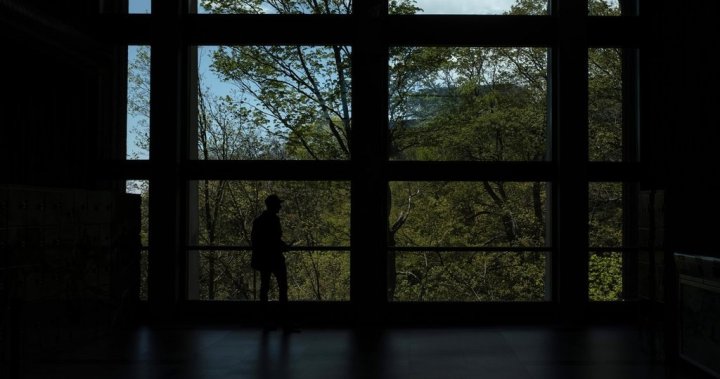The morning fog still hangs over Ontario Place as Emma Chen parks her car. For twelve years, she guided wide-eyed children through interactive exhibits at the Ontario Science Centre. Now, she stands looking at what will eventually become the Centre’s controversial new home.
“It feels like watching someone pack up your childhood home while they’re still building the new one,” says Chen, one of nearly 300 staff members displaced when the Ford government announced the Science Centre’s relocation last April.
One year after the announcement sent shockwaves through Toronto’s educational community, former staff members are breaking their silence about what they describe as a hasty decision with inadequate planning for the institution’s future.
The provincial government maintains the move will revitalize Ontario Place while saving taxpayers millions in deferred maintenance costs at the original Don Mills facility. But those who dedicated careers to the institution paint a more complicated picture.
“We’re talking about dismantling 50 years of carefully designed educational spaces,” explains Robert Winters, former director of exhibit development. “Some exhibits simply can’t be transported or replicated in the proposed space, which is roughly 60 percent smaller.”
According to Ministry of Infrastructure documents obtained through Freedom of Information requests, the new Ontario Science Centre will occupy approximately 140,000 square feet—substantially less than the 235,000 square feet at the Don Mills location. This reduction raises questions about which beloved exhibits will survive the transition.
The Ontario Science Centre opened in 1969, becoming an architectural landmark and educational pillar for generations of Ontarians. In 2022, it welcomed over 500,000 visitors despite lingering pandemic effects. The government’s surprise announcement cited aging infrastructure and $369 million in deferred maintenance costs as justification for the move.
Minister of Infrastructure Kinga Surma defended the decision in a statement to Mediawall.news: “The Ontario Science Centre’s future at Ontario Place ensures this beloved institution will continue inspiring future generations while revitalizing our waterfront. The current building requires extensive repairs that would cost taxpayers hundreds of millions.”
However, internal documents reveal staff concerns were largely ignored during the decision-making process. A survey conducted among employees last summer found 78% believed the new location would compromise the Centre’s educational mission.
“We aren’t just concerned about square footage,” says Dr. Maya Krishnan, who spent eight years developing science programming. “The Don Mills location was purposely built with specific features—high ceilings for physics demonstrations, outdoor space for environmental learning, and proximity to the ravine for ecology programs.”
The Science Centre’s unionized staff, represented by OPSEU Local 549, have questioned both the financial calculations and consultation process. Union president Nancy Jackson points out: “The government keeps citing maintenance costs for the old building, but hasn’t released detailed costings for creating equivalent facilities at Ontario Place.”
An independent analysis by Toronto-based architectural firm Hansen & Associates estimates retrofitting the Ontario Place pods for the Science Centre’s specialized needs could exceed $450 million—potentially more than refurbishing the original location.
For communities in Toronto’s northeast, the relocation means losing a vital educational resource. Don Valley East Councillor Jon Burnside expressed concern about equitable access: “The Science Centre brought STEM education to neighborhoods that often have fewer cultural institutions. Moving it downtown creates barriers for many families who relied on its proximity.”
The relocation has sparked broader questions about Ontario’s approach to science education. Provincial test scores show a 6% decline in science proficiency among Grade 6 students since 2019, according to the Education Quality and Accountability Office.
Dr. Samantha Rodriguez, education researcher at Ryerson University, sees a troubling pattern: “We’re reducing access to hands-on science learning precisely when we should be expanding it. The Science Centre provided irreplaceable experiential learning that supplements classroom education.”
The government’s timeline projects the new Ontario Science Centre opening in 2028, leaving a potential four-year gap after the Don Mills location closes in 2024. Officials have promised “pop-up” exhibits during the transition, but former staff remain skeptical about implementation.
“Science education isn’t something you can effectively deliver through temporary installations,” argues Winters. “The magic of the Science Centre was the comprehensive ecosystem of learning it provided—from planetarium shows to hands-on exhibits to outdoor exploration.”
For many displaced staff, the debate transcends professional concerns. Nearly half have found positions at other cultural institutions, while others have left the field entirely. Chen now works at the Royal Ontario Museum but still mourns what she describes as “unnecessary cultural demolition.”
Community groups have organized under the banner “Save Our Science Centre,” collecting over 30,000 signatures opposing the move. Their latest rally at Queen’s Park drew hundreds of supporters, including scientists, educators, and families with personal connections to the institution.
Eleven-year-old Aisha Malik attended with her father, clutching a homemade sign reading “My Future Needs Science.” She told me why the Centre matters: “I want to be an engineer, and the Science Centre is where I first built a bridge that could actually hold weight. I figured out how triangles make things stronger.”
As construction crews prepare the Ontario Place site, the question remains whether the new Science Centre will preserve the educational magic that inspired generations. Former staff worry that without their institutional knowledge and adequate space, something irreplaceable may be lost in translation.
“Science isn’t just facts and figures,” Chen reflects, watching workers at the future site. “It’s about creating moments of wonder that spark lifetime passions. I hope they remember that’s what they’re really responsible for building here.”
In the meantime, the original Science Centre stands as both monument and cautionary tale—a reminder that our cultural institutions carry values beyond their physical structures or balance sheets.






